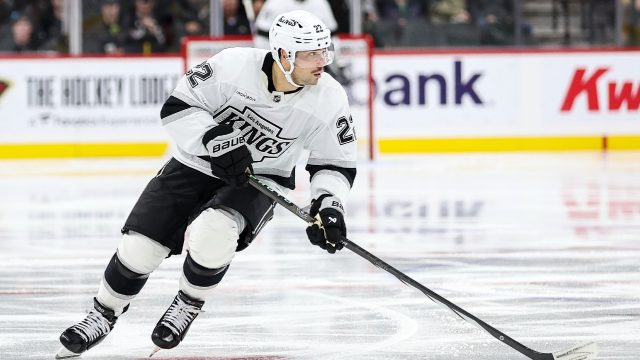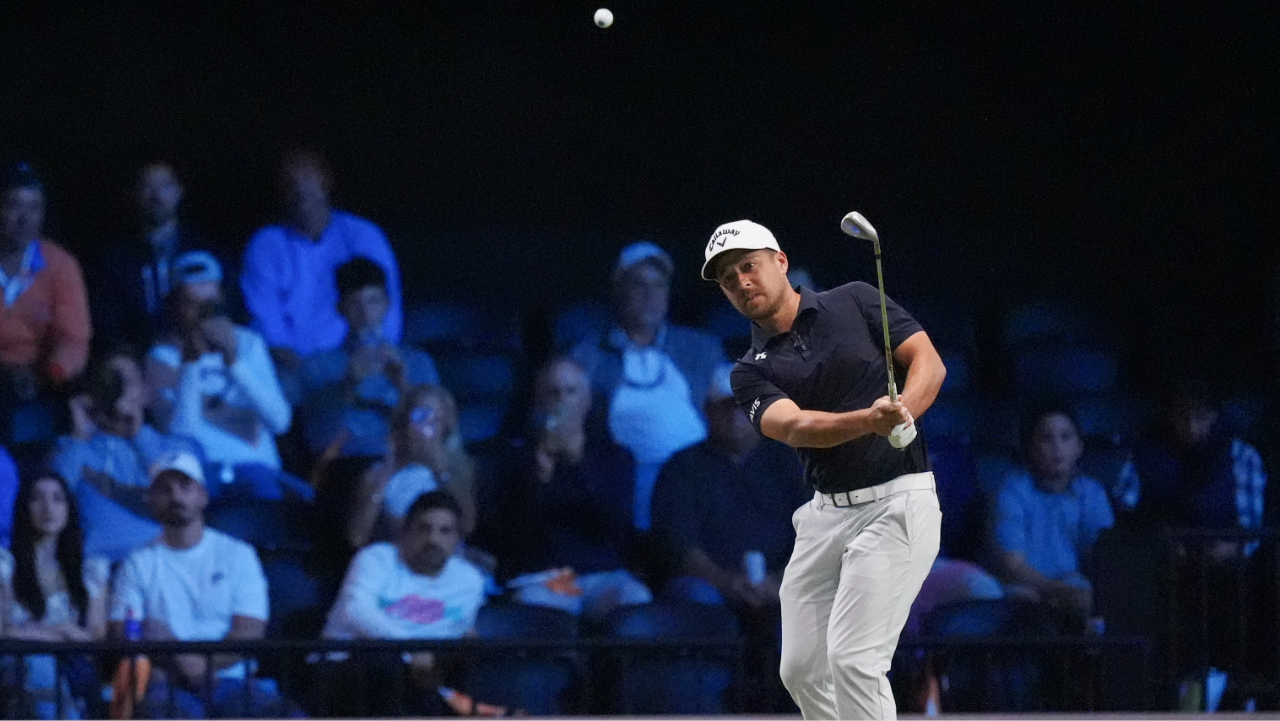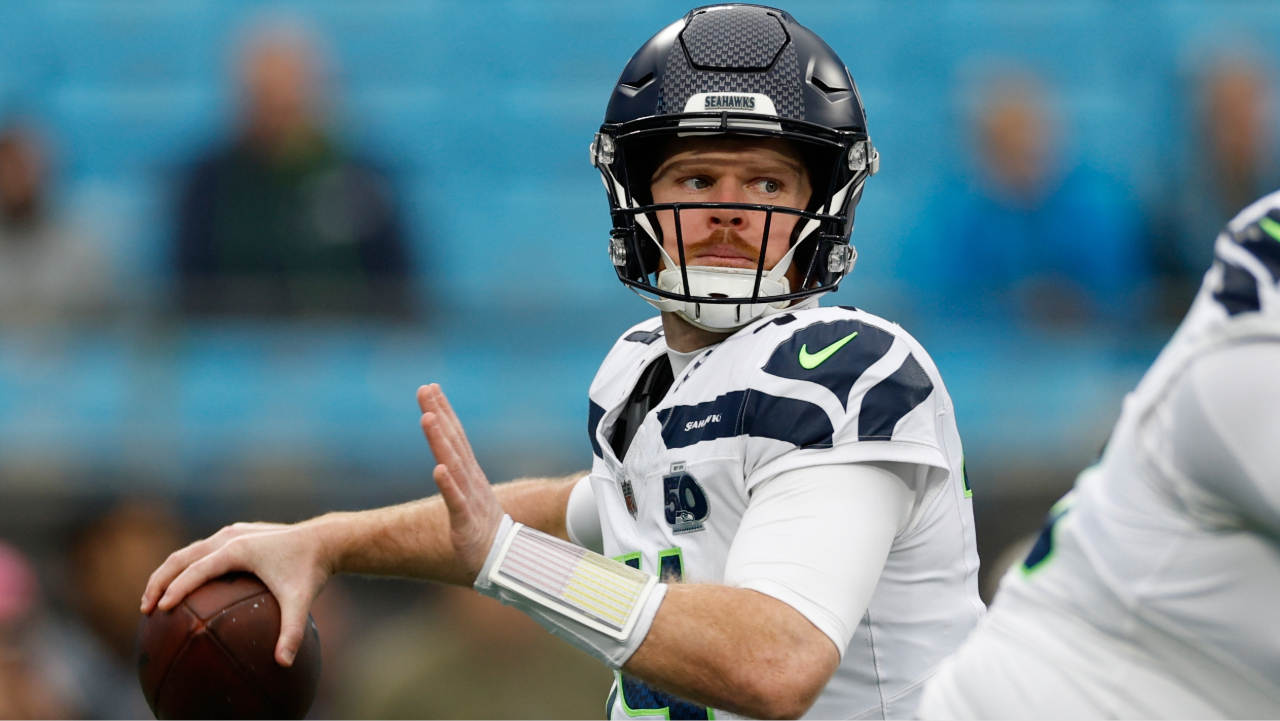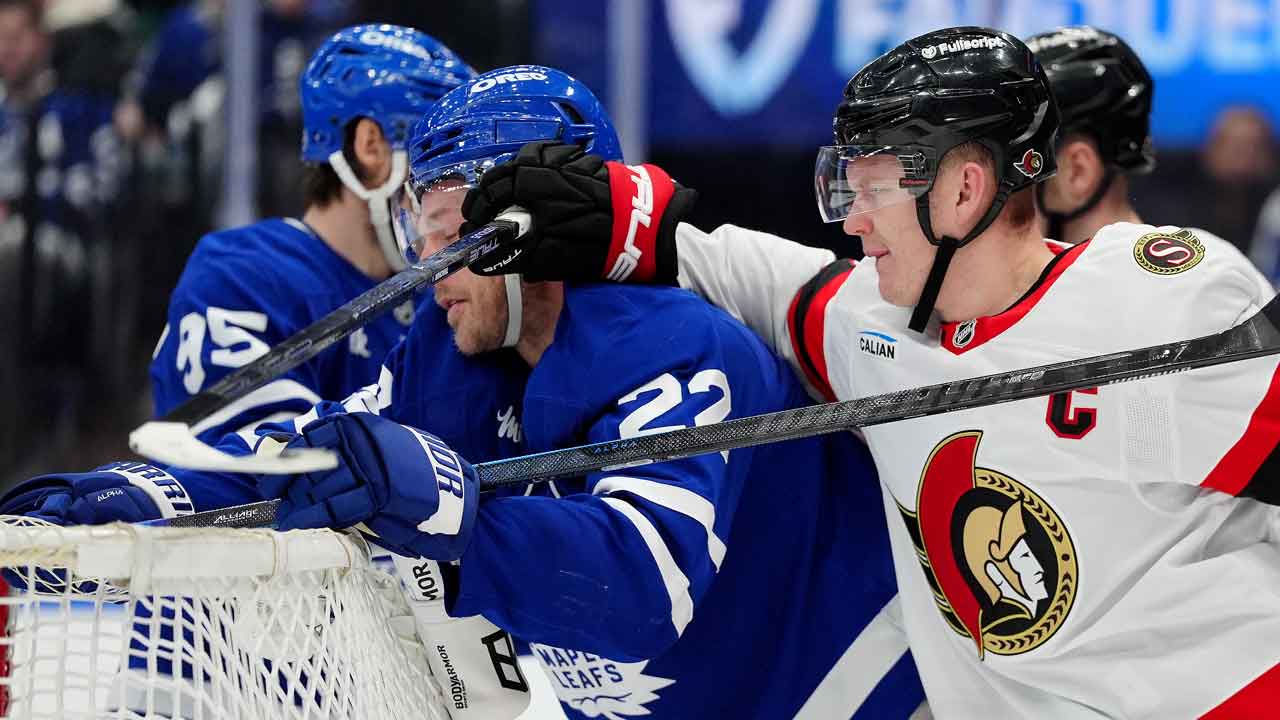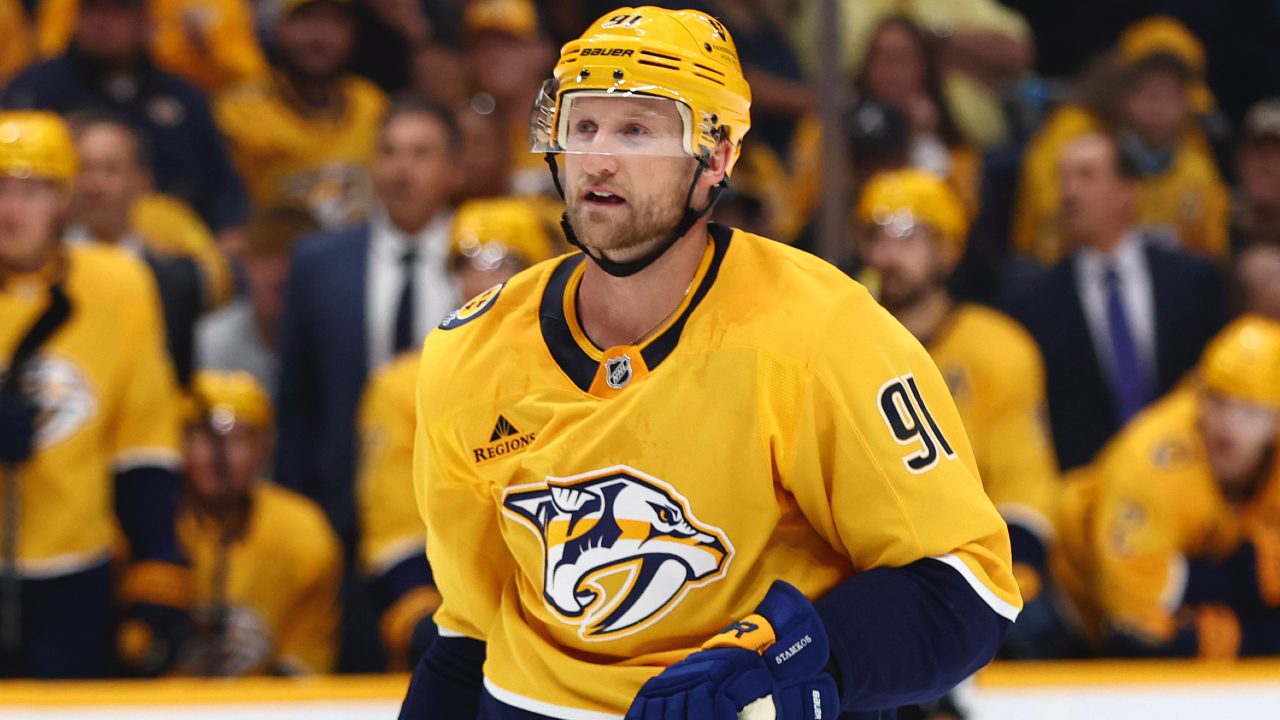
As a busy slate of games gets going on Saturday, we’ll officially hit the one-quarter mark of the NHL season.
Twenty games is an important benchmark because it’s not “too early” anymore. Early streaks or slumps have had time to snap and, while things will still certainly change in the weeks and months ahead, it’s far enough along now for us to get a feel for who’s going to exceed expectations and who will underperform.
With that in mind, we take a glance at some of the surprises and disappointments so far.
Surprise: Dylan Strome and the Washington Capitals
Making the playoffs by the skin of their teeth last season, and somehow with an atrocious minus-37 goal differential, the Capitals didn’t inspire the most confidence coming into this season. Their summer additions were: Pierre-Luc Dubois, cast off from Los Angeles one year into an eight-year contract; Jakob Chychrun in a trade for Nick Jensen; Logan Thompson in a swap for picks; Matt Roy via free agency, who was injured and didn’t start playing regularly until November; and Andrew Mangiapane in a trade for a second-round pick after he fell out of favour in Calgary.
But was that enough to lift them back up the standings?
-

-
32 Thoughts: The Podcast
Hockey fans already know the name, but this is not the blog. From Sportsnet, 32 Thoughts: The Podcast with NHL Insider Elliotte Friedman & Kyle Bukauskas is a weekly deep dive into the biggest news and interviews from the hockey world.
So far, the answer has been a resounding “yes” as the Capitals hit the quarter mark 13-5-1, second in the Eastern Conference by points percentage (.711), and third in the league with a plus-27 goal differential.
And while some of the newcomers have been key to this surprise (Thompson is wiggling his way into the Team Canada goaltending conversation), a carryover trio from last season has driven a lot of this success.
Washington’s top line has been centre Dylan Strome between Alex Ovechkin and Aliaksei Protas, who have been on the ice together for a league-leading 16 goals and plus-11 differential, according to MoneyPuck. Ovechkin rightly has earned most of the attention as he creeps towards Wayne Gretzky’s goal record and roared out of the gate with 15 goals in 18 games before a knee injury, but Strome is deserving of some attention here, too.
Strome has assisted on 12 of Ovechkin’s 15 snipes, with five of them primary helpers. He’s the team scoring leader with 28 points through 19 games, tied for seventh-best in the league. He’s also tied for third with Nathan McKinnon at 21 even-strength points and is already over halfway to his career best in assists.
If there is something to watch for from Washington in the second quarter it is these key stats: Their power play is 25th in the league (15.8 per cent) and they have the highest five-on-five PDO going, with a 14.42 team shooting percentage that is over three points better than the No. 2 ranked team in the league.
They’ll also move through the next stage without Ovechkin, who will miss the next four-to-six weeks.
Disappointment: Montreal taking even longer than expected to put it all together
With Ottawa, Detroit and Buffalo all under pressure to push up and into the playoffs this season, the Canadiens could be excused to have another year of building to that point. But even granting them that grace, the expectation was that they’d be better than last in the East and on the cusp of being at the bottom of the league overall.
The time to be content with great draft-lottery odds should be over for this team. Injuries to Patrik Laine and David Reinbacher took some wind out of their sails, but poor organization and defensive play have them well off any improved pace. At the quarter mark, Montreal’s .421 points percentage lags behind the .463 mark they finished at last season.
One of nine NHL teams allowing more than 30 shots against per game, the Habs are third-worst at protecting their goaltenders from high danger looks. As explored by Andrew Brewer, the defensive system the young roster is being charged with executing is probably playing a large role in that and, if they want to see in-season improvement from here, they might have to think about changing that approach.
Having young and exciting players is great (hey, Ivan Demidov is not far off from the NHL either) but promise guarantees nothing over the long-term. Piling up losses, year over year, risks ingraining a losing culture and that can be the most challenging thing to dig out of, no matter what the depth chart and pipeline looks like on paper.
The Buffalo Sabres have had promise, in one way or another, for years and haven’t made the playoffs in nearly a decade and a half. If the Canadiens stay on the path of no improvement, they risk following the Sabres’ lead.
Surprise: Kirill Marchenko and the Columbus Blue Jackets
A pretty good start in October for Columbus gave way to an awful road trip in early November, through which they picked up one point in five games. But they arrive at the quarter mark with two wins in a row, having beaten the Boston Bruins on Tuesday and the Tampa Bay Lightning on Thursday in a wild 7-6 OT game.
Playoff-bound this team is unlikely to be, but there is positivity under the surface. In the thick of the wild card at this point, and with just a minus-3 goal differential, the Jackets have a top-10 offence overall, but when you take out their struggling power play, Columbus is a top-five offensive team at five-on-five.
A big part of that is the play of Sean Monahan and Kirill Marchenko, both delivering above expectations so far. The former leads the team at a point-per-game pace, the latter a 24-year-old player having a breakout campaign and just about halfway to last season’s 42-point total.
According to MoneyPuck, of all lines around the league with at least 100 minutes played together, the Monahan-Marchenko-Yegor Chinakov trio has scored nine times and allowed three, making for an on-ice goals percentage of 75 that ranks fifth-best in the league — tied with Tampa Bay’s top line.
Disappointment: Steven Stamkos, Jonathan Marchessault and the Nashville Predators
Much has been said and written about the obviously biggest surprise disappointment in Nashville, as the off-season winners are the first quarter’s biggest losers.
Though Steven Stamkos has had a better November than October, he’s still scored in only four of 10 games. Jonathan Marchessualt has actually slowed to just a single marker in the second month.
Odds may indicate things will turn around, after all Nashville has a league-low 4.88 shooting percentage at five-on-five, which would be the worst mark of any team in the cap era if it ended up that way. The 2014-15 Arizona Coyotes (5.7), 2013-14 Buffalo Sabres (5.8) and 2011-12 Los Angeles Kings (6.0 and Stanley Cup winners) are the three worst 82-game team shooting percentages over that time.
How likely are the Predators to get going on offence? Consider they average the ninth-most shots per game and 12th-most high danger chances. They are still rather low in expected goals per 60, sitting 18th in the league, but also have the league’s worst actual vs. expected goals differential — an astounding minus 1.1 per 60 minutes.
The next worst team by that measure? The Detroit Red Wings at minus-.54 and Boston Bruins at minus-.47. Nashville is way behind and overdue for something to drop.
Surprise: Dustin Wolf and the Calgary Flames hanging around
After being one of the bigger sellers last season, the Flames didn’t seem well positioned to do anything but play for a higher draft pick in 2024-25. And yet, after a quarter of the way into the season, they’re the second-best team in the Pacific Division and hit Game 20 on a three-game winning streak.
Any talk that defenceman Rasmus Andersson could be traded a year before his contract expires has dissipated, and he leads the team in scoring. Right behind him? Jonathan Huberdeau, though his 11 points in 20 games isn’t pacing better than he finished his first two years with the team.
The Flames are a top 10 team in shots for per game but still get outshot, on average. They aren’t an offensively illustrious team, 22nd in goals per game and 26th in power-play efficiency. What they are getting, though, is some very high-end netminding from rookie Dustin Wolf.
The 23-year-old has played 11 games and is 11th among all netminders in Goals Saved Above Expected so far. His .926 save percentage and 2.33 GAA is outperforming Dan Vladar and Wolf is helping to elevate the Flames and patch some issues.
Without a clear-cut rookie scorer separating from the pack, Wolf is making an early intriguing case for the Calder Trophy. Though, as outlined by Adam Vingan this week, Wolf may have to handle a heavier workload over the remaining three-quarters to have a shot.
Disappointment: Stuart Skinner possibly playing his way off of Team Canada
Heading into this NHL season the three most likely netminders for Team Canada at the 4 Nations Face-Off probably were Jordan Binnington (Stanley Cup winner), Adin Hill (Stanley Cup winner) and Stuart Skinner (Stanley Cup finalist). Now all of that is up in the air — none of those goalies has a Goals Saved Above Average in the positive.
The one struggling the most, however, has been Skinner, who came within a whisker of winning a Cup last season. It was thought he could carry that momentum into this year and be a possible answer for Canada’s lack of depth at the position, but he might be playing his way off that roster now.
To be sure, Skinner isn’t all to blame for Edmonton’s early-season stumbling again. The Oilers are 20th in five-on-five offence and their formerly high-flying power play is 22nd. They are fourth-best in shots against per game however, and fifth-best in limiting high danger chances at five-on-five.
Edmonton is 10th in expected goals against at even strength, but 20th in actual goals against. That’s where the goaltending comes in, and where Skinner is seemingly allowing that one squeaky goal a night.
Taking a look at the Canadian goaltending landscape, a number of other netminders are coming out of the woodwork and making a case. Detroit’s Cam Talbot has the best save percentage (.920) of any Canadian, with Washington’s Logan Thompson (.914) right behind. Both are top 10 league wide in GSAE. There’s even some question if Joey Daccord could be considered, given his father was born in Montreal.
Surprise: The sneaky good Minnesota Wild and the Winnipeg Jets outperforming expectations
The Central Division isn’t being led by the teams most assumed would be there through the first quarter of the season — heck, no one pencilled in the Winnipeg Jets and Minnesota Wild to be first and second in the entire league at the quarter mark.
After a quiet off-season in Winnipeg followed a meek playoff exit against Colorado, many people were skeptical of the Jets coming into this season. But from the drop of the puck in October, the Jets came out with the best 15-game start of any team in NHL history, shooting out with a 14-1-0 record.
They are giving early shades of the 2022-23 Boston Bruins, who not many saw coming as a record-setting Presidents’ Trophy-winning team. Through 20 games the Jets already have a plus-37 goal differential, nine better than the No. 2 Carolina Hurricanes.
While Kyle Connor, Mark Scheifele and Nikolaj Ehlers are all better than point-per-game players and earning plenty of attention, it should be noted the Jets also have one of the best third lines going. Mason Appleton, Nino Niederreiter and Adam Lowry (a possible consideration in a checking role for Team Canada) have played nearly 200 minutes together and have been on the ice for 12 goals for and just three against — 80 per cent in their favour. Of 43 lines that have spent at least 100 minutes together so far this season, that ranks third-best.
And we shouldn’t acknowledge one Central surprise without also giving props to the other. The Minnesota Wild have lost a few more games in extra time than the Jets, but they share the league lead in regulation losses with just three so far.
Long caught in the league’s middle, the Wild had more closely been aligned with the St. Louis Blues in this division — whom we should give an honourable mention as one of the league’s first quarter disappointments. But while the Blues regress, the Wild are rising up and becoming one of the more intriguing long-term teams to watch in the league as the salary cap rises.
Disappointment: What happened to the Boston Bruins?
These aren’t the Patrice Bergeron-led Bruins anymore — but that was also the case last season and they still finished tied with the sixth-best regular season record in the league.
In fact, it seemed as though Boston may have positioned itself better in 2024-25 by adding Elias Lindholm to centre and helping fill depth they’ve struggled to replace at the position. Even Nikita Zadorov on the back end was a mean addition made to ensure Boston remained tough to play against.
But while neither of those pickups have neatly fit so far, to be fair, nothing has clicked. Jeremy Swayman remains a step behind after he missed training camp over a contract negotiation, which in retrospect, the team let get out of hand and it happened after they put themselves in a tough position by trading out Linus Ullmark before getting Swayman signed).
David Pastrnak was benched, Brad Marchand had a couple of noticeable disputes in-game with the head coach, and uncharacteristically bad losses to Toronto (4-0), Dallas (7-2) and Columbus (5-1) defined the Bruins’ first quarter. The final one of those losses was the last straw for head coach Jim Montgomery, who was fired even after being one of the more successful bench bosses over the past couple of seasons.
The Bruins are a .500 team by points percentage at the quarter mark, tied with Anaheim and behind the Buffalo Sabres. Their minus-20 goal differential is third-worst in the league, ahead of only San Jose and Pittsburgh. It’s unusual company for Boston to be in and, if things don’t get better fast, attention will turn to how to improve or turnover the roster through trades — or even to the man calling the shots in the front office.


